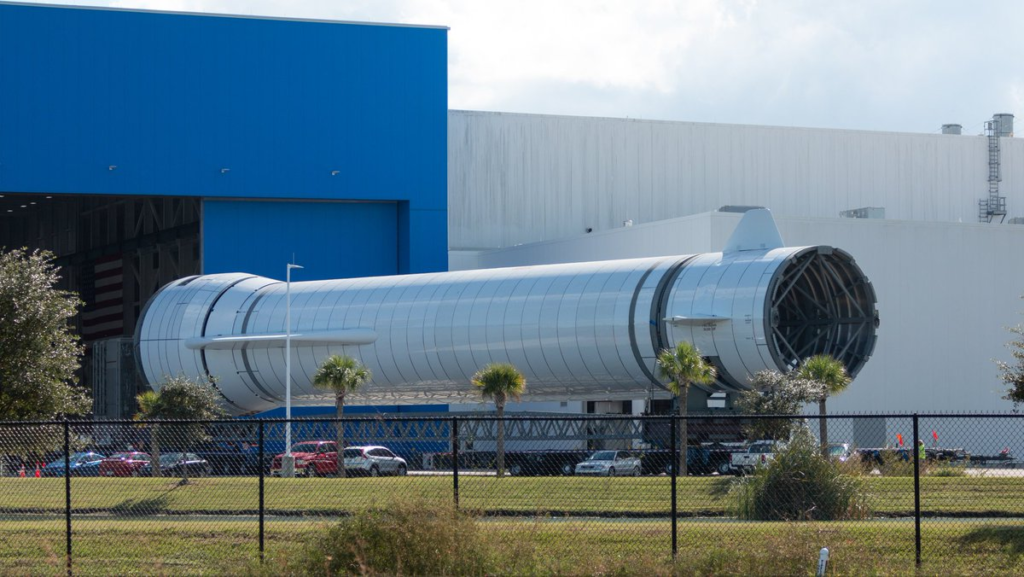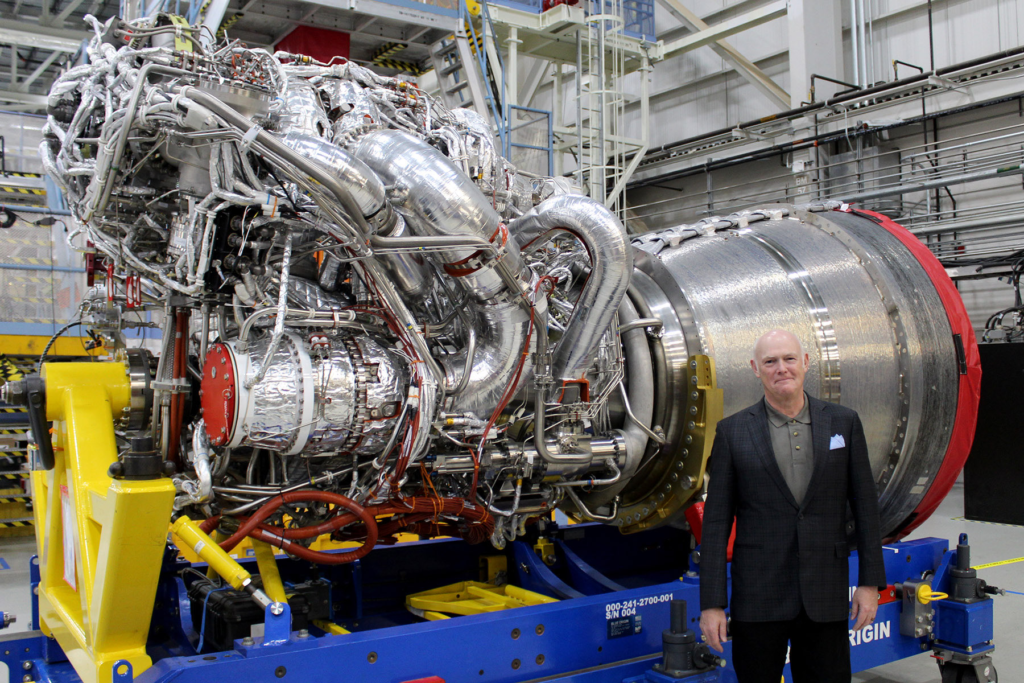
An In-Depth Look At Blue Origin’s New Glenn Launch Vehicle
New Glenn is expected to be a substantial future launch vehicle and the backbone of Blue Origin’s goals. For years now, the rocket has been under development as the company tries to determine exactly what they want out of the heavy lift launch vehicle. Since its original announcement, many of its core features have changed as Blue Origin shifts the goal and purpose of New Glenn.
This being said, New Glenn is still expected to be one of the most powerful rockets in the industry and launch quite consistently. While progress has not been the fastest, Blue Origin is working to get the BE-4 engine ready, booster reusability planned out, and more. All of which will have an impact on not only the schedule of New Glenn, but what the rocket has to offer when complete.
With an estimated 45,000 kilogram payload capactiy to low Earth orbit, and work to reuse the booster and possibly the upper stage, New Glenn is far from a simple rocket. In the last few months alone we have seen some more progress and general work on the project. Here I will go more in-depth into what Blue Origin has been working on, a closer look at New Glenn, what to expect in the near future, and more.
New Glenn & BE-4 Progress

In terms of progress on New Glenn, while updates have still been limited, progress is definitely ramping up. This primarily regards the BE-4 engine which this next generation launch vehicle relies on. Specifically, New Glenn’s first stage will utilize seven reusable and throttleable BE-4 LOX/LNG engines, generating 17,100 kN (3.85 million lbf) thrust at sea level. In the last couple of months, we have watched some of the development and final testing of two BE-4 flight engines. These two engines are for United Launch Alliances Vulcan Centaur which is expected to lift off for the first time using these very engines not long from now.
Just in the last few days, the CEO of ULA, Tory Bruno, has provided some information on the progress of these engines. Specifically, on October 10th, Tory Bruno tweeted saying, “Hmm. What’s that? Looks like a BE4 flight engine being uncrated at the Rocket Factory in Decatur.” This included an image of the flight engine we had recently seen complete testing. Just a few days later on the 12th, he tweeted again mentioning, “I had to step in for Standard Brian today. He was busy building rockets elsewhere in the plant. (And, I can neither confirm nor deny rumors that I was seen hugging this @blueorigin BE4 flight engine in Decatur moments before).” Here you could see a close up of the finished engine with Tory right in front of it. The reason these updates are so important for New Glenn has to do with the fact that for one, ULA has priority on the BE-4, and two, the result of Vulcan’s first launch will most definitely have an impact on the future of BE-4 development and progress.
If the first launch goes perfectly, this will give Blue Origin a lot of confidence and some invaluable data about the BE-4 and how exactly they operate during a real launch. From here they could work to produce as many BE-4 as possible and start improving the manufacturing, and testing phase. On the other hand, if something were to go wrong having to do with the Flight BE-4s provided, it could be a major setback. In this case, Blue Origin would have to figure out exactly what went wrong and make sure no other BE-4 experiences a similar issue. In terms of the ULA priority I mentioned prior, in late 2014, Blue Origin signed an agreement with United Launch Alliance to co-develop the BE-4 engine and to commit to using the new engine on the Vulcan launch vehicle, which would replace the Russian-made RD-180 engine. Before Blue Origin can start creating and testing its own engines for New Glenn, the company needs to produce enough for United Launch Alliance first, then for their own rocket. With Vulcan’s official first launch scheduled in early 2023, It’s very possible we are only a few months away from one of New Glenn’s most important components being put to the test.
In addition to progress on BE-4, it looks as if Blue Origin is also in the process of figuring out exactly how they plan to land New Glenn’s booster. After scrapping the rocket’s ship just a few months ago, they now are working on a different landing option. In reality, the company is likely working toward an approach similar to SpaceX and the Falcon 9. A large drone ship could be the future of New Glenn booster reusability and landing.
In-Depth Overview

Now that we know more about some of the progress and general plan’s of New Glenn, we can take a closer look at the launch vehicle itself and what makes it so unique. The New Glenn architecture is intended to be a high-performance space launch system designed to meet requirements for fault tolerance, safety, and reusability – all consistent with providing a reliable space transportation capability.
Starting from the bottom, the New Glenn primary booster is an operationally reusable first stage with a length of 57.5 m (188.5 ft) and a tank diameter of 7 m (23 ft). The stage consists of three sections: aft, mid, and forward. The aft module of the booster contains seven (7) BE-4 LOX/LNG engines with (3,850,000 lbf) total thrust at sea level. The restartable BE-4 engines provide precision thrust vector control and continuous deep throttle capability to support propulsive deceleration and landing maneuvers, while featuring long design life. The 8.5 m (28 ft) diameter engine skirt protects the engines from atmospheric reentry conditions and contains six stowed landing gear. The mid module of the booster houses the fuel (LNG) and oxidizer (LOX) tanks.
Focusing on the design, the tanks are made of ortho grid aluminum and are designed to withstand the high g-loads realized during reentry. Large aerodynamic strakes on the aft end of the tanks give the returning first stage enhanced cross-range during descent and re-entry. The forward module of the booster features four actuated aerodynamic control fins for attitude control during descent. This section of the booster also provides ground umbilical connections for New Glenn and interstage housing of the two second stage vacuum-optimized BE-3U engines. The forward module houses various guidance navigation & control avionics, including an autonomous flight safety system. The pneumatic pusher stage separation system, which provides positive separation before second stage ignition, is located in the forward module. All of which combines to create the first stage of New Glenn.
Moving up the rocket, you then have the upper stage. While it’s possible in the future Blue Origin will work to implement a reusable upper stage apart of project Jarvis, here I will highlight the current expendable design. The second stage is an expendable LOX/LH2 stage with dual gimballing BE-3U engines with 1,060 kN (240,000 lbf) total thrust in vacuum. The stage also has a tank diameter of 7 m (23 ft) and uses common tooling with the first stage to reduce recurring cost. The length of the second stage tank is 16.1 m (52.9 ft) and the overall length including the two high expansion ratio nozzle BE-3Us is 23.4 m (76.9 ft).
Similar to the first stage, the second stage has aft, mid, and forward sections. The aft section consists primarily of the two BE-3U engines, associated load bearing cross-bar thrust structure, and tankage/equipment for long duration operations. The reaction control system (RCS)/settling system uses tri-axial thrusters distributed in four places along the thrust structure. The second stage aft section integrates with the first stage forward section and provides one of two second stage umbilical interfaces. The mid-section contains all propellant tankage including a forward LH2 tank and an aft LOX tank, separated by a common insulated bulkhead. The tank barrels are ortho grid aluminum construction, and the domes are constructed from welded aluminum. A single external insulated LH2 supply line passes around the LOX tank. The forward section consists of the LH2 tank forward skirt and a circumferential avionics shelf integrated with the forward dome. The skirt provides the primary mechanical interfaces to the payload accommodations, including a jointed interface between the composite fixed adapter and the PLF.
In terms of booster reusability, after second stage separation, the first stage booster reorients itself to reenter the atmosphere aft end first. Through a combination of aerodynamics and propulsive maneuvers, the stage performs a precision landing on the ocean-going platform in the Atlantic Ocean, likely a large drone ship. After recovery at sea, the booster returns to the launch site via Port Canaveral for inspection and reuse. Blue Origin wants to reuse New Glenn’s booster for a minimum of 25 flights, making it competitive for a variety of launch markets. Ideally, Civil, commercial, and national security customers can all find solutions in New Glenn’s high-performance configuration.
Conclusion
Blue Origin is continuing to work and make progress on New Glenn. While it hasn’t been the fastest, we recently have seen engine updates increasing which is a good sign for the rocket. In addition, the company is working on plans for booster landing, the upper stage, and more. We will have to wait and see how it progresses and the impact it has on the space industry.
